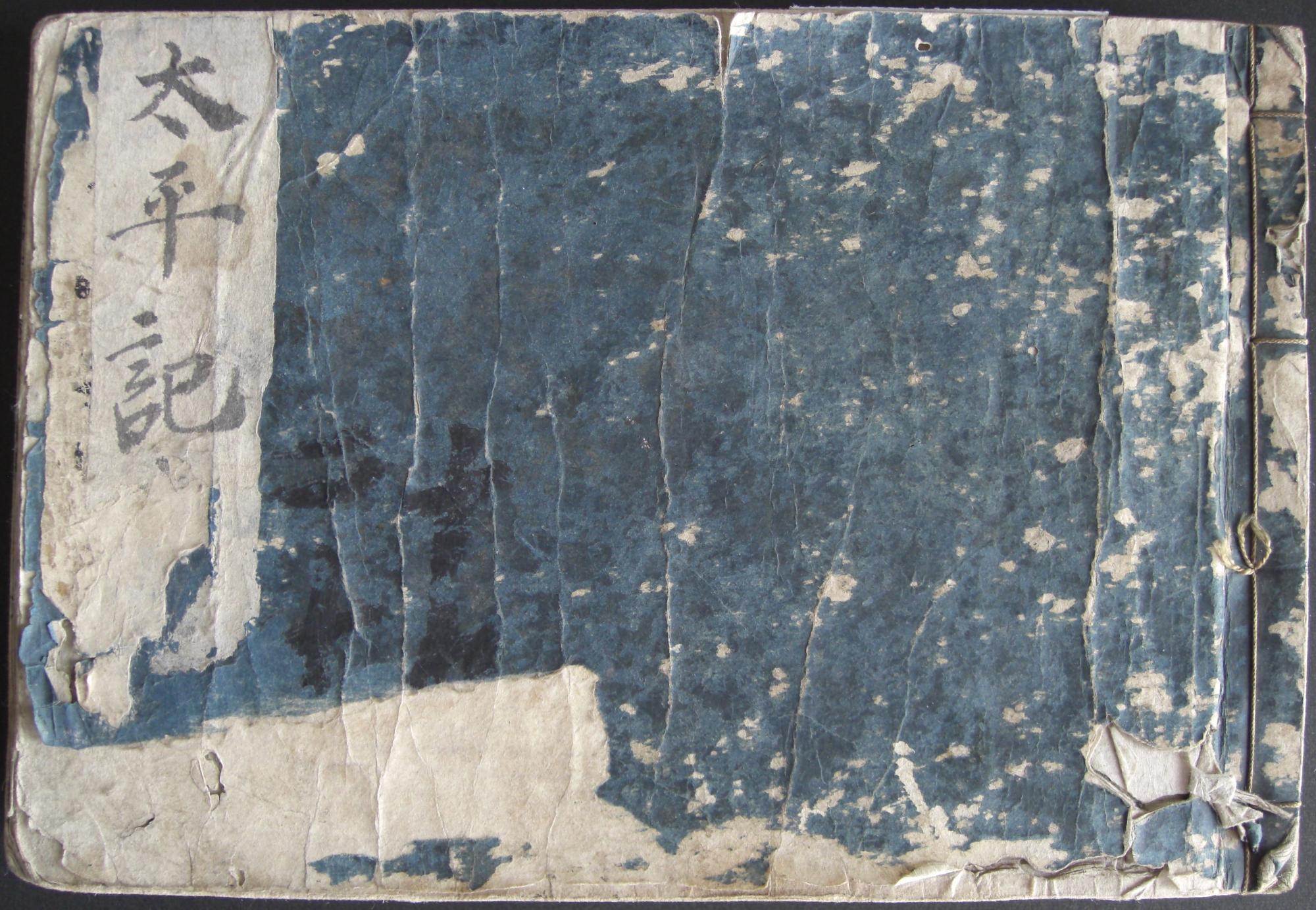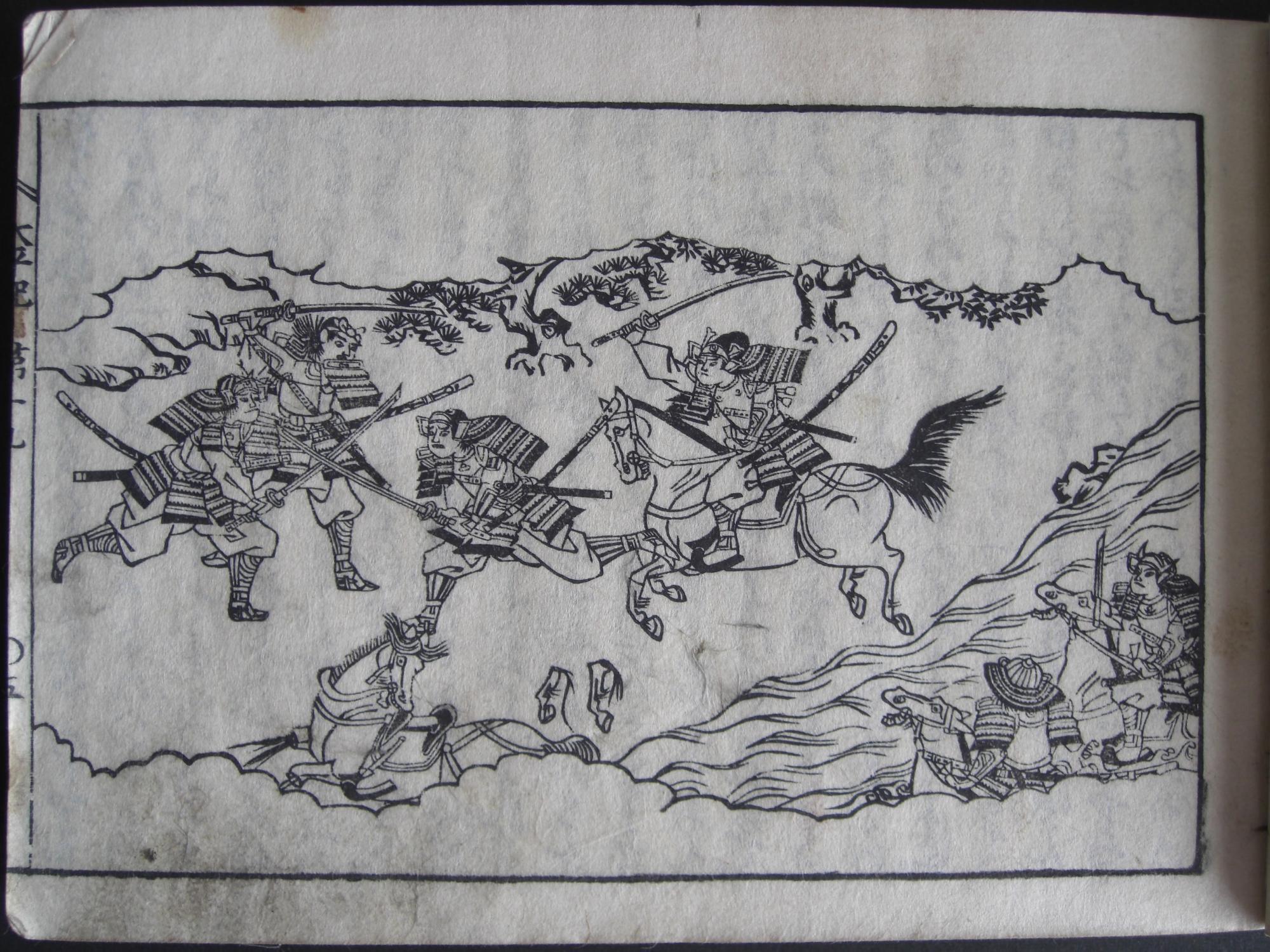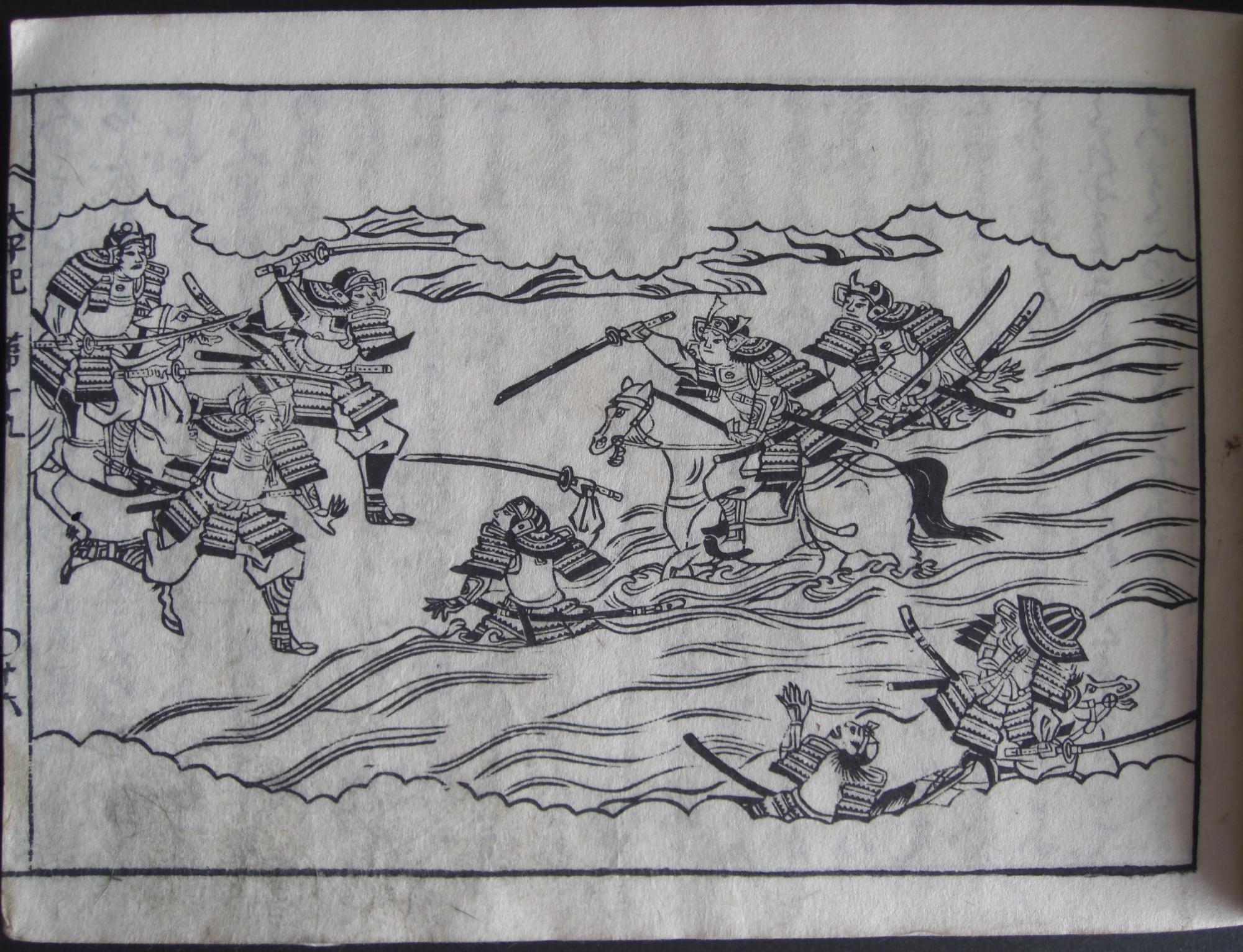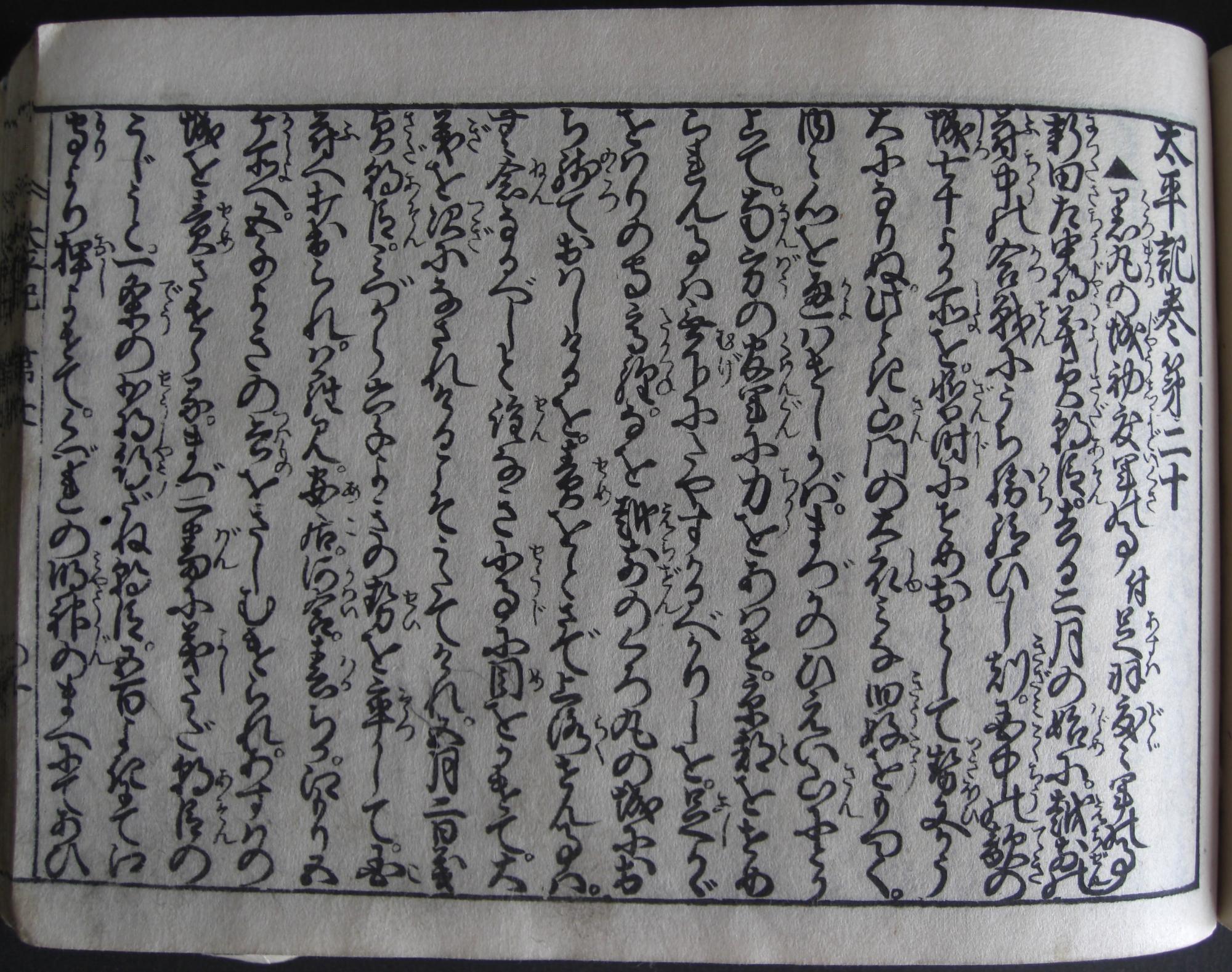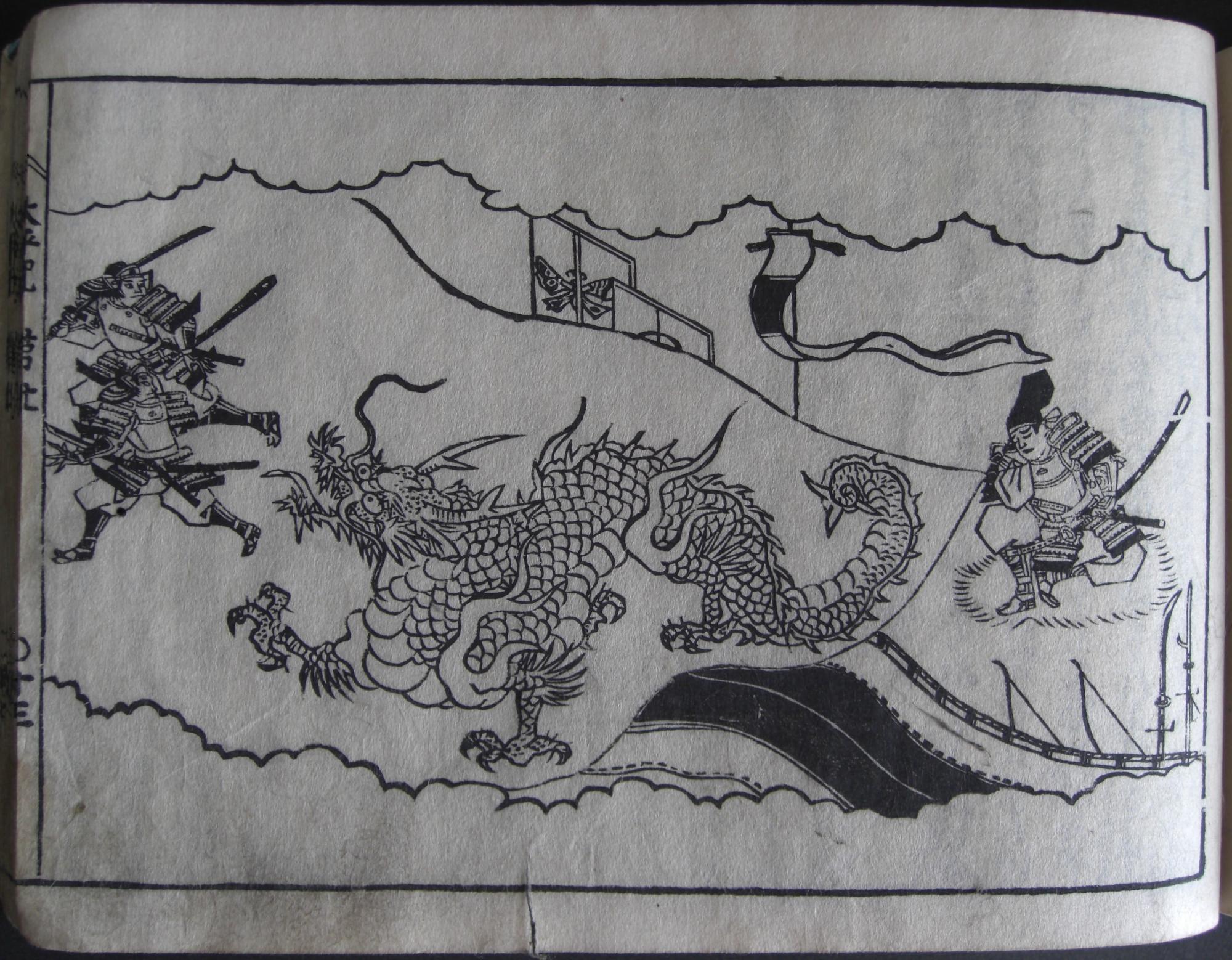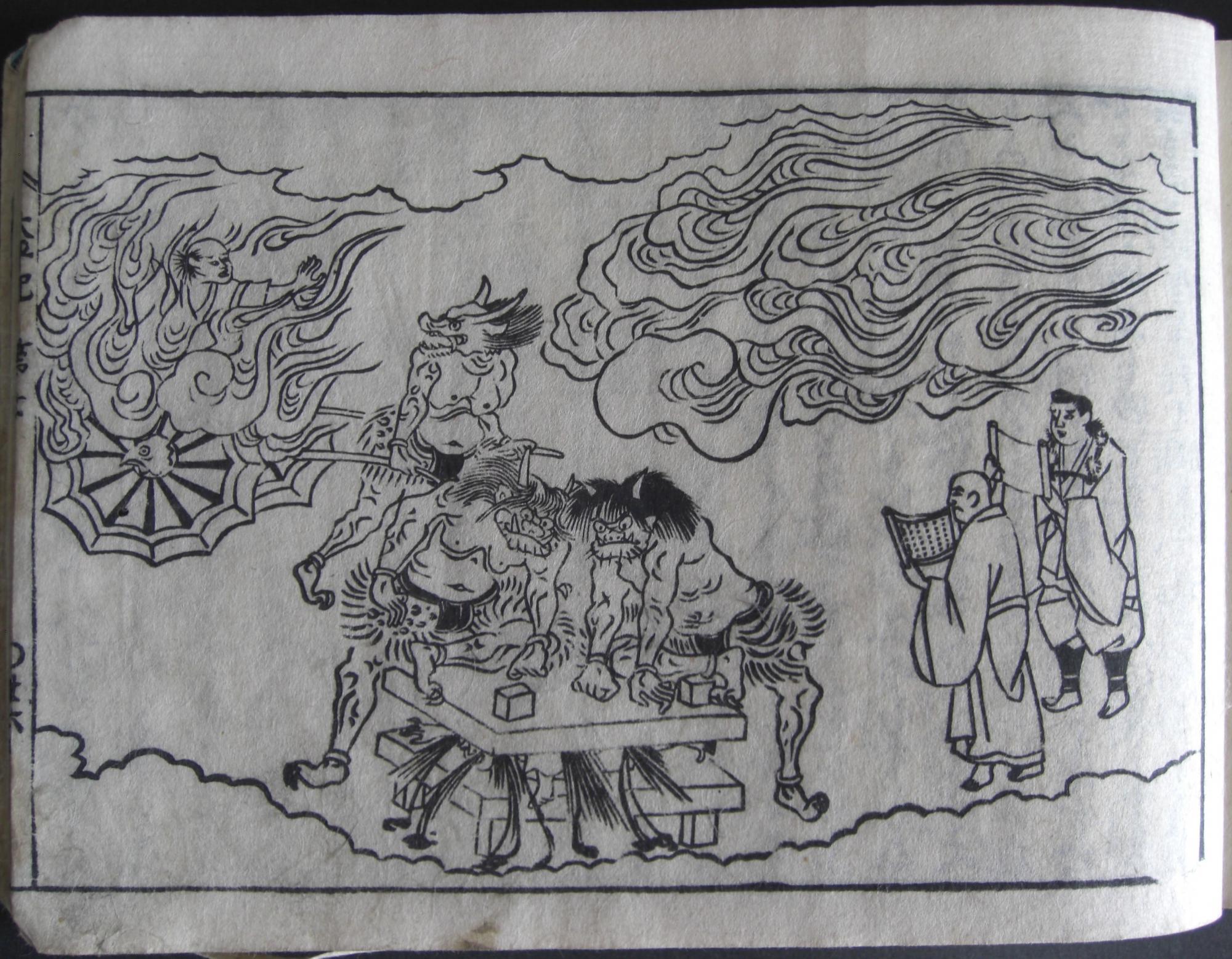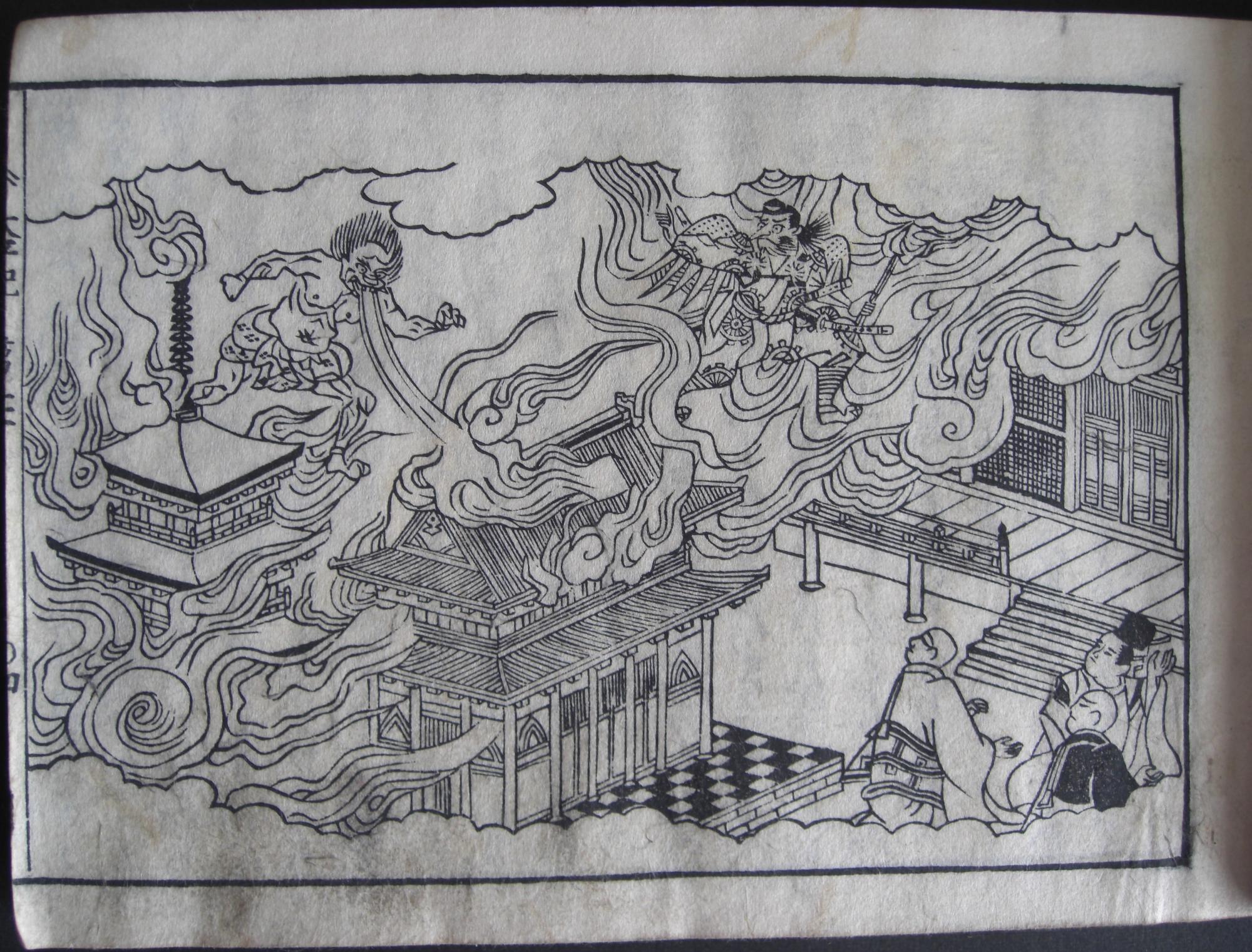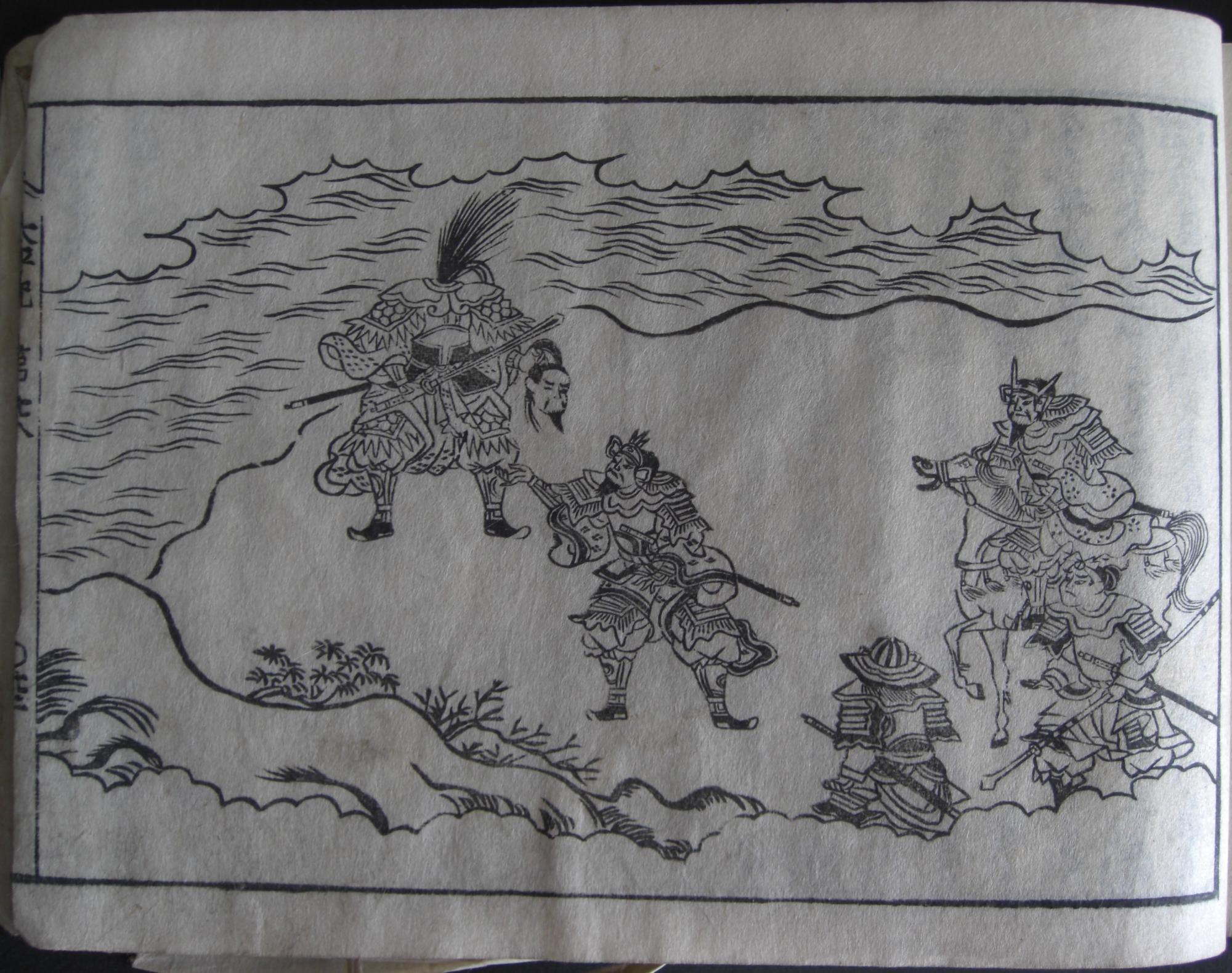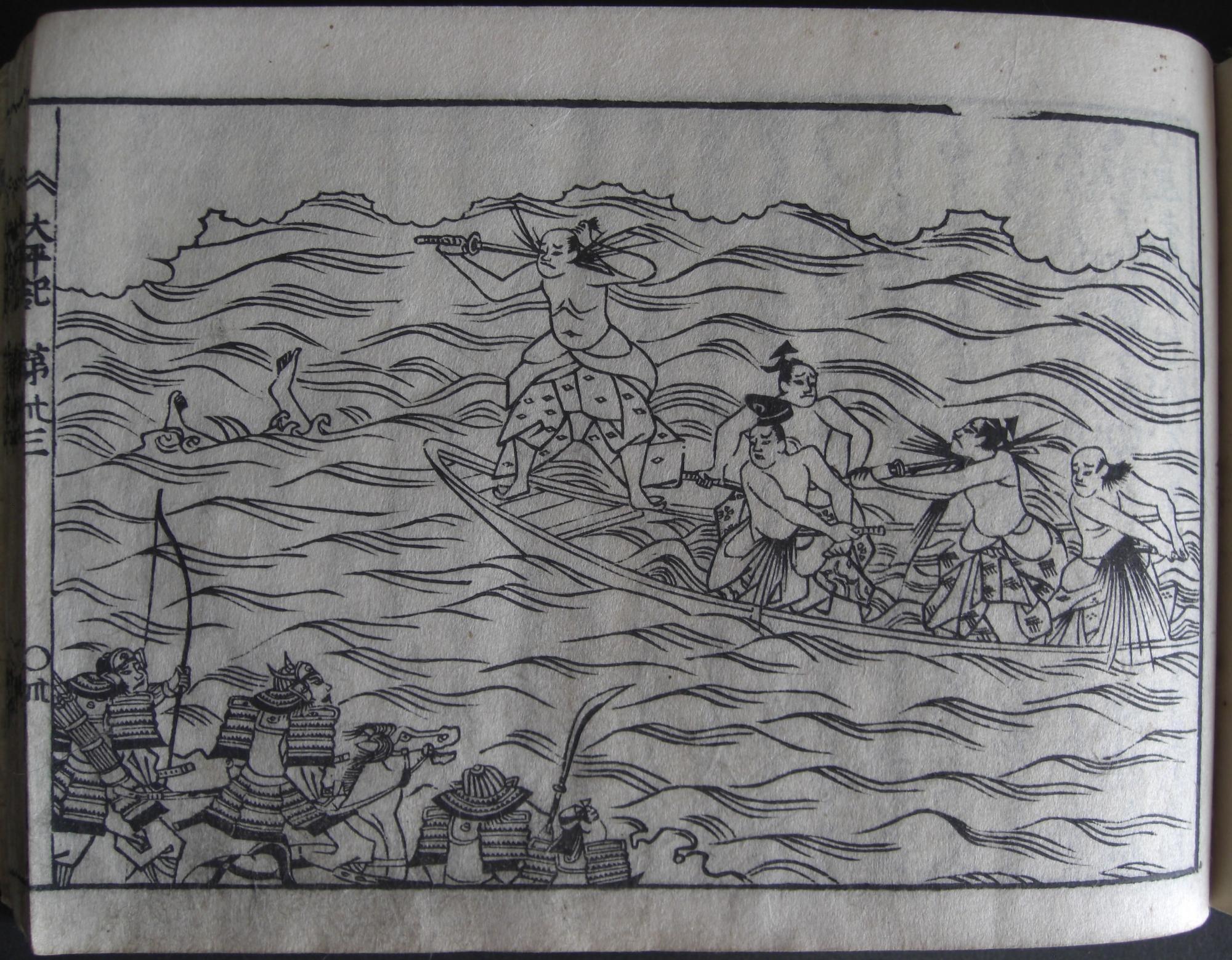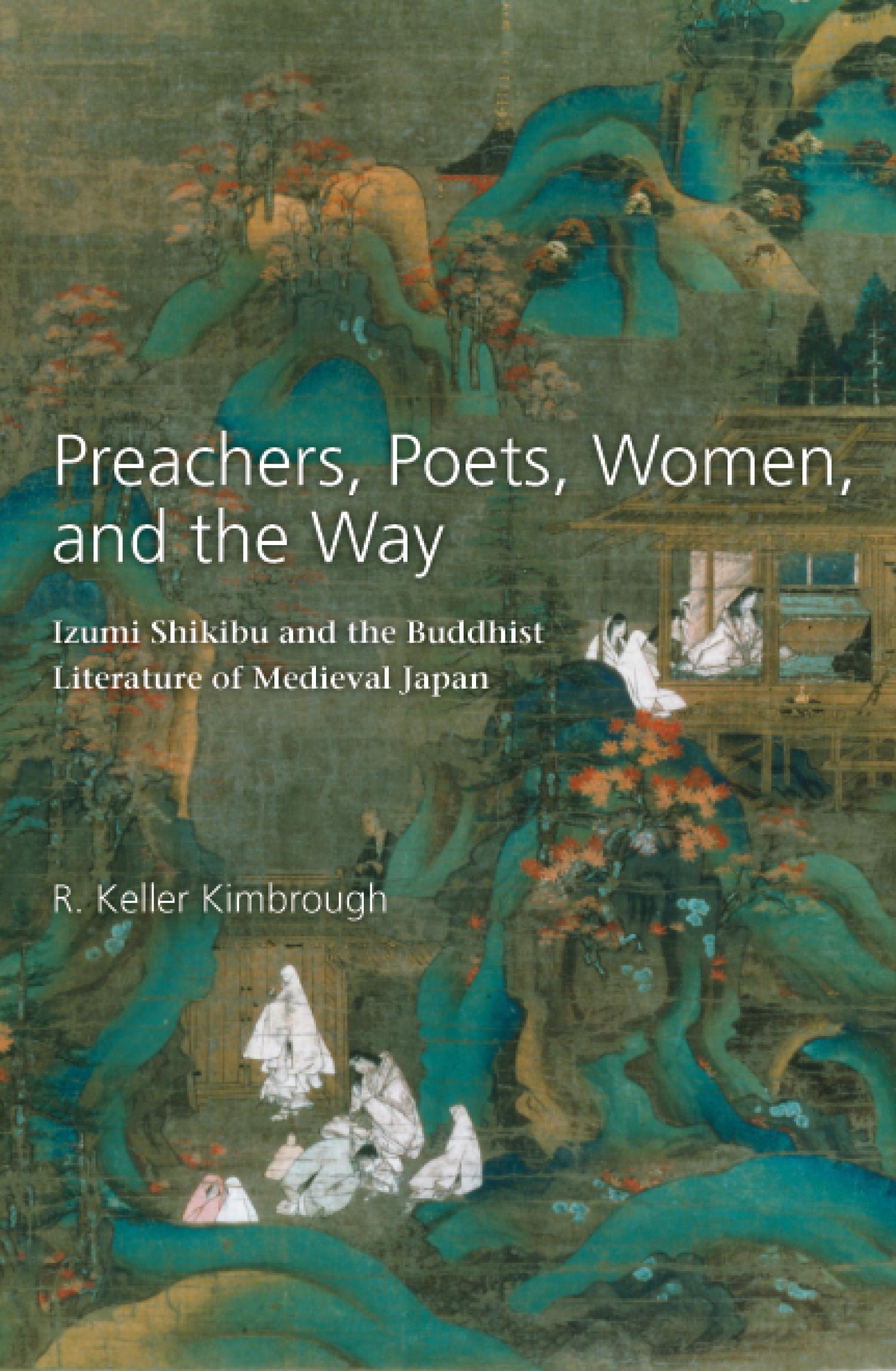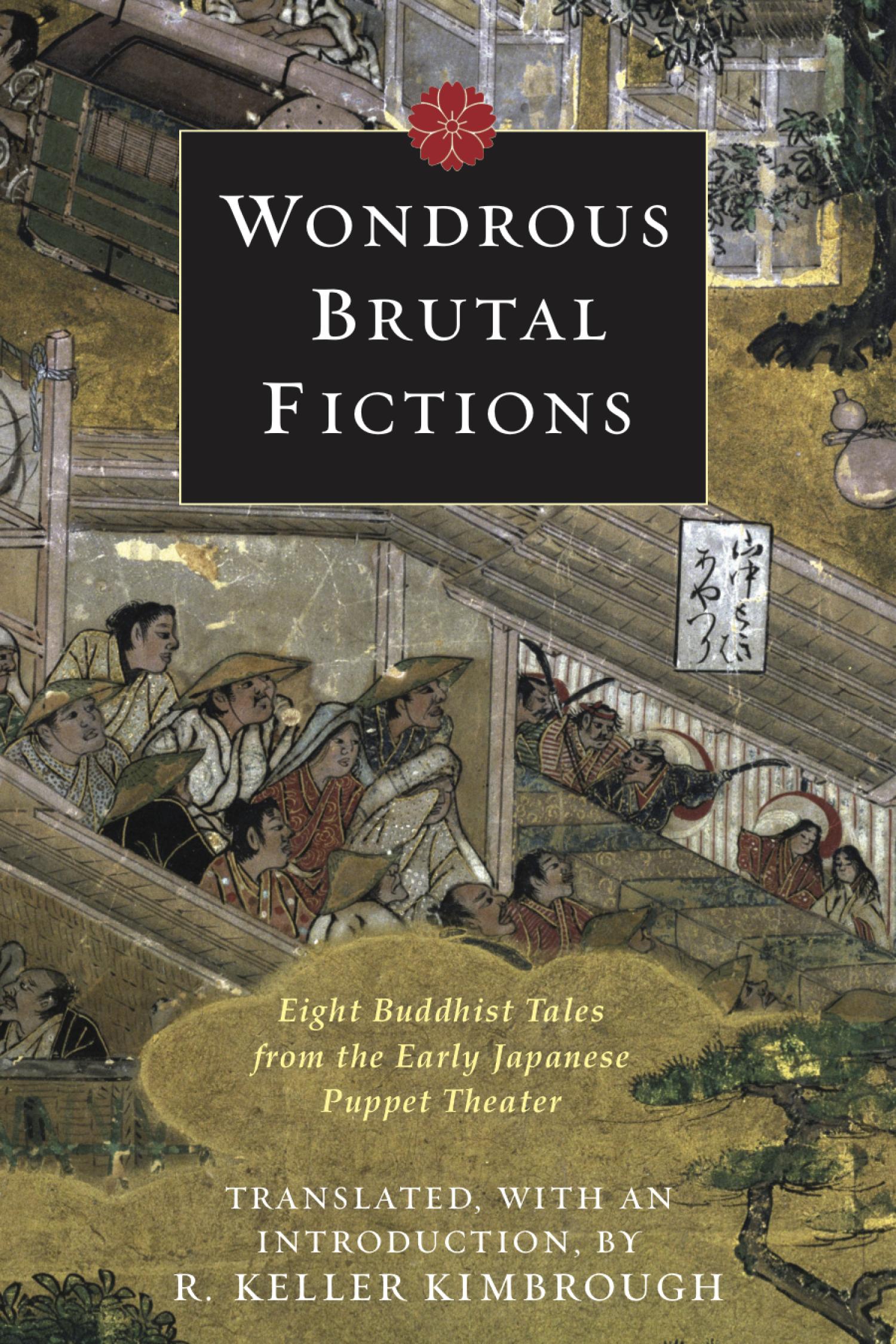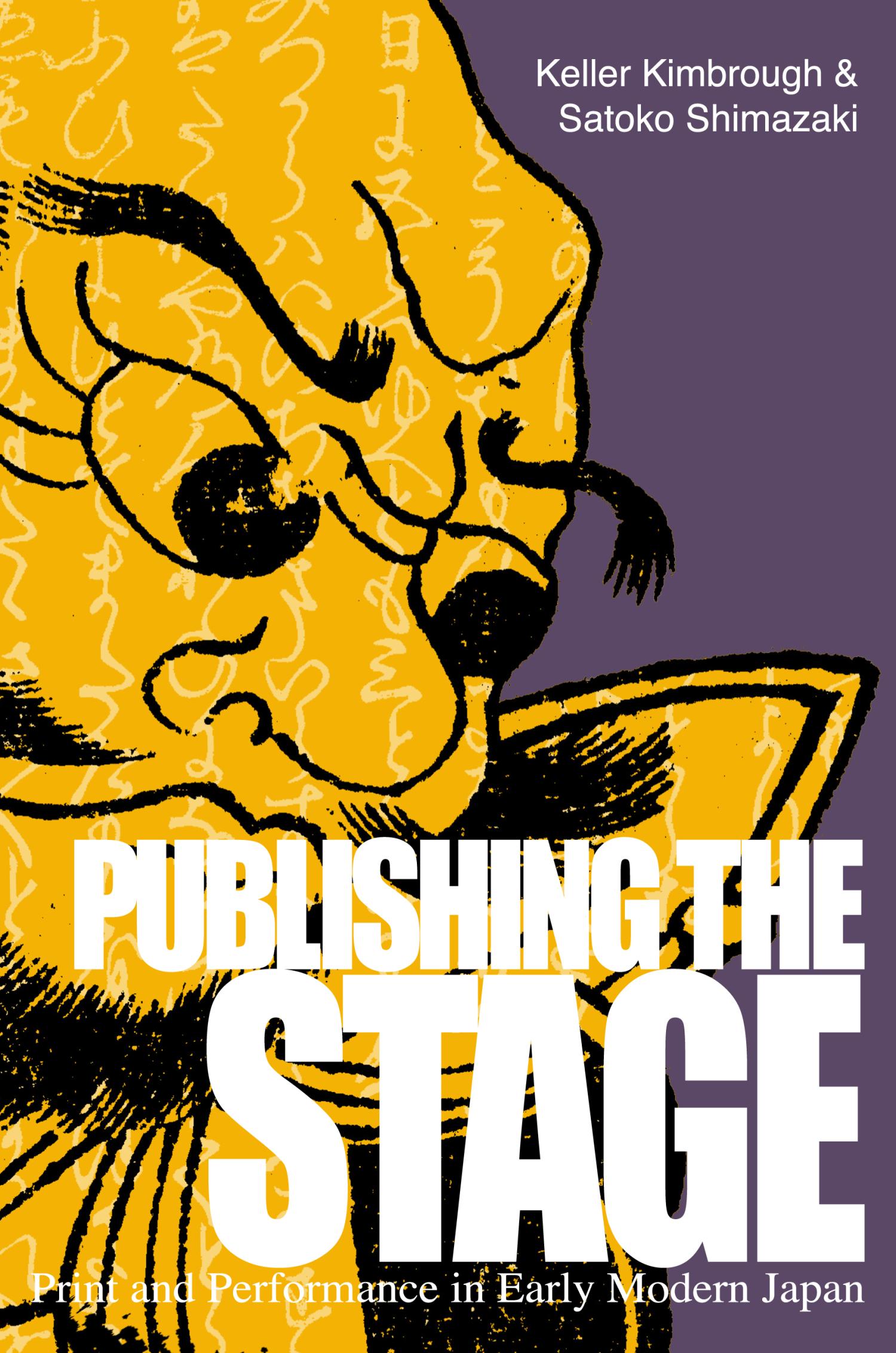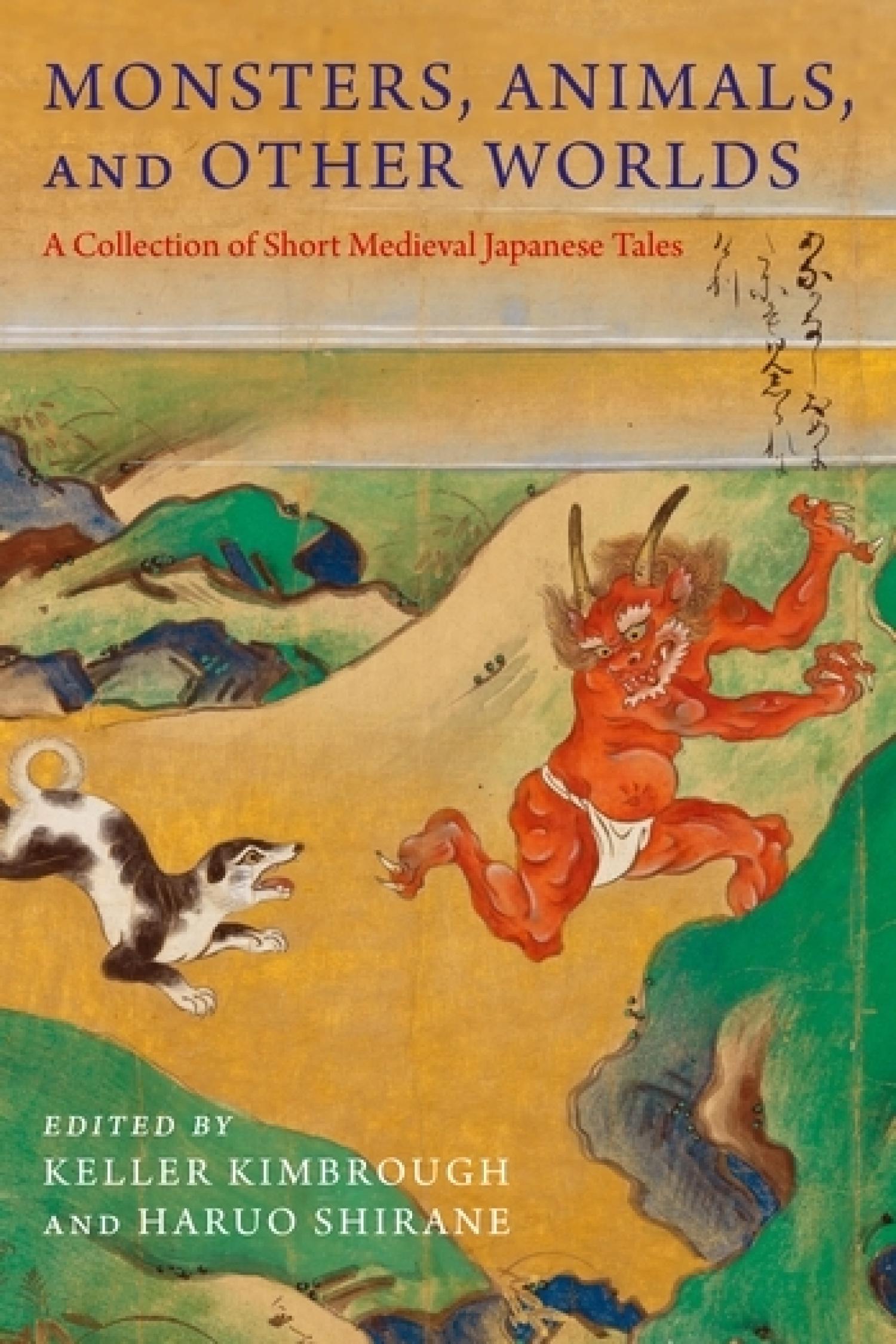Publications
Books and Edited Volumes
Monsters, Animals, and Other Worlds: A Collection of Short Medieval Japanese Tales, co-edited with Haruo Shirane (New York: Columbia University Press, 2018).
Wondrous Brutal Fictions: Eight Buddhist Tales from the Early Japanese Puppet Theater (New York: Columbia University Press, 2013).
Publishing the Stage: Print and Performance in Early Modern Japan, co-edited with Satoko Shimazaki (Boulder: University of Colorado Center for Asian Studies, 2011).
Vernacular Buddhism and Medieval Japanese Literature, co-edited with Hank Glassman. Special issue of the Japanese Journal of Religious Studies (vol. 36, no. 2 [2009]).
Preachers, Poets, Women, and the Way: Izumi Shikibu and the Buddhist Literature of Medieval Japan (Ann Arbor: University of Michigan Center for Japanese Studies, 2008).
Articles and Book Chapters
“Potato Puppet Theater/Beating the Beauties: A Seventeenth-Century Japanese Picture Book for Children,” co-authored with Pia Jolliffe, Journal of the History of Childhood and Youth 16, no. 1 (2023): 197-210.
“Staging Senseless Violence: Early Jōruri Puppet Theater and the Culture of Performance,” in The Tokugawa World, ed. Gary P. Leupp and De-Min Tao (London and New York: Routledge, 2022), 578-593.
“Casting Spells: Combat Charms and Secret Scrolls in the Warrior Fiction of Late Medieval Japan,” Monumenta Nipponica 74, no. 2 (2019): 211-248.
“Pushing Filial Piety: The Twenty-Four Filial Exemplars and an Osaka Publisher’s ‘Beneficial Books for Women,’” Japan Review 34 (2019): 43-68.
“Shibukawa Seiemon no jokunsho to Nijūshikō,” Setsuwa bungaku kenkyū 54 (2019): 117-127.
“Trials of Devotion: Orphaned Children and the Boundaries of Horror in Japanese Buddhist Fiction,” in Buddhist Asia: Traditions, Transmissions, and Transformations, ed. Nicholas S. Brasovan and Micheline M. Soong (Albany, NY: SUNY Press, 2019), 71-92.
“Hon no yōkai, yōkai no hon: tōzai no tsukumogami kō,” in Higashi no yōkai, Nishi no monsutā: sōzōryoku no bunka hikaku, ed. Tokuda Kazuo (Tokyo: Bensei Shuppan, 2018), 190-205.
“Neko no Shuten Dōji to Nezumi no Ōeyama emaki,” in Nihon bungaku no tenbō wo hiraku, dai ni kan: kaiga, imēji no kairō, ed. Deguchi Hisanori (Tokyo: Kasama Shoin, 2017), 192-97.
“Late Medieval Popular Fiction and Narrated Genres: Otogizōshi, Kōwakamai, Sekkyō, and Ko-jōruri,” in The Cambridge History of Japanese Literature, ed. Haruo Shirane and Tomi Suzuki, with David Lurie (Cambridge: Cambridge University Press, 2016), 355-69.
“Bloody Hell! Reading Boys’ Books in Seventeenth Century Japan,” Asian Ethnology 74, no. 1 (2015): 111-139.
“Tengu no hanashi: Tengu no dairi ni okeru rokudō annai,” in Kai’i, yōkai bunka no dentō to sōzō: uchi to soto no shiten kara, ed. Komatsu Kazuhiko (Kyoto: Nichibunken, 2015): 85-90.
“Tokugawa-ke no oni byōsha: kawaraban Ōeyama Chōdon Dōji taiji no zu honkoku to shōkai,” Rikkyō Daigaku Nihon bungaku 111 (2014): 107-113.
“Preachers and Playwrights: Ikuta Atsumori and the Roots of Noh,” in Like Clouds or Mists: Studies and Translations of Nō Plays of the Genpei War, ed. Elizabeth Oyler and Michael Watson (Ithaca, NY: Cornell University East Asia Program, 2013), 211-229.
“Sacred Charnel Visions: Painting the Dead in Illustrated Scrolls of The Demon Shuten Dōji,” in Japanese Visual Culture: Performance, Media, and Text, ed. Kenji Kobayashi, Maori Saitō, and Haruo Shirane (Tokyo: National Institute of Japanese Literature, 2013), 35-47.
“Oni monogatari no fujō dōsatsu: Shuten Dōji emaki ni okeru igai byōsha,” in Amerika ni watatta monogatari-e: emaki, byōbu, ehon, ed. Kokubungaku Kenkyū Shiryōkan (Tokyo: Perikansha, 2013), 63-74.
“Battling Tengu, Battling Conceit: Visualizing Abstraction in The Tale of the Handcart Priest,” Japanese Journal of Religious Studies 39, no. 2 (fall 2012): 275-305.
“Ko-Atsumori kō: Heike monogatari Atsumori-tan to namae no igi,” Denshō bungaku kenkyū 59 (May 2010): 51-59.
“Text and Illustration in Medieval Japanese Fiction”/“Chūsei bungaku no moji-tekisuto to kaiga-imēji kō,” in New Horizons in Japanese Literary Studies, ed. Haruo Shirane (Tokyo: Bensei Shuppan, 2009), 105-107 (English) and 117-119 (Japanese).
“Bonnō shōmetsu monogatari: Tameyo no sōshi to chūsei bungaku ni okeru sanji no kyoyō gendo,” in Nihon bungaku no sōzōbutsu: shoseki, shahon, emaki, ed. Suzuki Jun and Melissa McCormick (Tokyo: National Institute of Japanese Literature, 2009), 79-89.
“Kusa-zōshi ni miru otogizōshi juyō,” in Otogizōshi: hyakka ryōran, ed. Tokuda Kazuo (Tokyo: Kasama Shoin, 2008), 601-18.
“Otogizōshi Shuten Dōji / Ibuki Dōji no nikushoku ron,” Kokubungaku: kaishaku to kanshō, bessatsu (October 2008): 141-50.
“Illustrating the Classics: The Otogizōshi Lazy Tarō in Edo Pictorial Fiction,” Japanese Language and Literature 42, no. 1 (spring 2008): 257-304.
“Travel Writing from Hell? Minomoto no Yoriie and the Politics of Fuji no hitoana sōshi,” Proceedings of the Association for Japanese Literary Studies 8 (2007): 112-22.
“Preaching the Animal Realm in Late-Medieval Japan,” Asian Folklore Studies 65, no. 2 (fall 2006): 179-204.
“Tourists in Paradise: Writing the Pure Land in Medieval Japanese Fiction,” Japanese Journal of Religious Studies 33, no. 2 (fall 2006): 269-296.
“Murasaki Shikibu for Children: The Illustrated Shinpan Murasaki Shikibu of ca. 1747,” Japanese Language and Literature 40, no. 1 (spring 2006): 1-36.
“Reading the Miraculous Powers of Japanese Poetry: Spells, Truth Acts, and a Medieval Buddhist Poetics of the Supernatural,” Japanese Journal of Religious Studies 32, no. 1 (spring 2005): 1-33.
“Little Atsumori and The Tale of the Heike: Fiction as Commentary, and the Significance of a Name,” Proceedings of the Association for Japanese Literary Studies 5 (2004): 325-36.
“Nomori no kagami and the Perils of Poetic Heresy,” Proceedings of the Association for Japanese Literary Studies 4 (2003): 99-114. Re-published in the online journal Simply Haiku, May 2007.
“Apocryphal Texts and Literary Identity: Sei Shōnagon and the Matsushima Diary,” Monumenta Nipponica 57, no. 2 (summer 2002): 133-71.
“Voices from the Feminine Margin: Izumi Shikibu and the Nuns of Kumano and Seiganji,” in “Performing Japanese Women,” vol. 12:1 #23 of Women and Performance (2001): 59-78.
Independent Translations
“The Twenty-Four Filial Exemplars” (Nijūshikō), Japan Review 34 (2019): 69-94.
“Kachō Fūgetsu,” in Joshua S. Mostow, Courtly Visions: The Ise Stories and the Politics of Cultural Appropriation (Leiden: Brill, 2014), 311-23.
“Ko-Atsumori," in Like Clouds or Mists: Studies and Translations of Nō Plays of the Genpei War, ed. Elizabeth Oyler and Michael Watson (Ithaca, NY: Cornell University East Asia Program, 2013), 247-260.
“The Tale of the Handcart Priest” (Kuruma-zō sōshi). Published online as a digital supplement to Japanese Journal of Religious Studies 39, no. 2 (fall 2012): 1-7.
Komine Kazuaki, “Transcribing Bodies and Seeing Bodies: Unraveling Picture Scrolls,” in New Horizons in Japanese Literary Studies, ed. Haruo Shirane (Tokyo: Bensei Shuppan, 2009), 102-104.
“Shintokumaru,” “Shuten Dōji,” and “Chūjōhime," in Traditional Japanese Literature: An Anthology, Beginnings to 1600, ed. Haruo Shirane (New York: Columbia University Press, 2007), 1123-50 and 1160-81.
“The Tale of the Fuji Cave” (Fuji no hitoana sōshi). Published online as a digital supplement to Japanese Journal of Religious Studies 33, no. 2 (fall 2006): 1-22.
Encyclopedia Entries
“Shuten Dōji” and “Tengu,” in The Ashgate Encyclopedia of Literary and Cinematic Monsters, ed. Jeffrey Weinstock (London: Ashgate, 2014), 514-516 and 529-532.
Reviews
Robert Goree, Printing Landmarks: Popular Geography and Meisho Zue in Late Tokugawa Japan (Cambridge: Harvard University Asia Center, 2020), Monumenta Nipponica 77, no. 2 (2022): 341-44.
Laura Moretti, Pleasure in Profit: Popular Prose in Seventeenth-Century Japan (New York: Columbia University Press, 2020), Monumenta Nipponica 76, no. 2 (2021): 375-78.
Doris G. Bargen, Mapping Courtship and Kinship in Classical Japan: The Tale of Genji and Its Predecessors (Honolulu: University of Hawai‘i Press, 2015), H-Asia, H-Net Reviews. March 2017.
Alison McQueen Tokita, Japanese Singers of Tales: Ten Centuries of Performed Narrative (Farnham, UK, and Burlington, USA: Ashgate Publishing, 2015), The Journal of Japanese Studies 42, no. 2 (2016), 402-406.
Vyjayanthi R. Selinger, Authorizing the Shogunate: Ritual and Material Symbolism in the Literary Construction of Warrior Order (Leiden: Brill, 2013), Japanese Language and Literature 49, no. 1 (2015): 85-90.
Haruko Wakabayashi, The Seven Tengu Scrolls: Evil and the Rhetoric of Legitimacy in Medieval Japanese Buddhism(Honolulu: University of Hawai‘i Press, 2012), Japanese Journal of Religious Studies 41, no. 2 (fall 2013): 404-407.
Hank Glassman, The Face of Jizō: Image and Cult in Medieval Japanese Buddhism (Honolulu: University of Hawai‘i Press, 2012), Harvard Journal of Asiatic Studies 73, no. 1 (2013): 185-89.
Charlotte Eubanks, Miracles of Book and Body: Buddhist Textual Culture & Medieval Japan (Berkeley and Los Angeles: University of California Press, 2011), Comparative Literature Studies 49, no. 3 (2012): 485-88.
Michael Dylan Foster, Pandemonium and Parade: Japanese Monsters and the Culture of Yōkai (Berkeley and Los Angeles: University of California Press, 2009), Asian Ethnology 69, no. 1 (spring 2010): 176-80.
Jacqueline I. Stone and Mariko Namba Walter, eds., Death and the Afterlife in Japanese Buddhism (Honolulu: University of Hawai‘i Press, 2008), Japanese Journal of Religious Studies 36, no. 2 (fall 2009): 384-88.
Esperanza Ramirez-Christensen, Emptiness and Temporality: Buddhism and Medieval Japanese Poetics (Stanford: Stanford University Press, 2008), Japanese Journal of Religious Studies 35, no. 2 (fall 2008): 380-83.
David Bialock, Eccentric Spaces, Hidden Histories: Narrative, Ritual, and Royal Authority from The Chronicles of Japan to The Tale of the Heike (Stanford: Stanford University Press, 2007), The Journal of Japanese Studies 34, no. 2 (summer 2008): 429-33.
David W. Plath, Preaching From Pictures: A Japanese Mandala (DVD) (Media Production Group, 2006), Visual Anthropology 21, no. 3 (May 2008): 276-77.
Janet R. Goodwin, Selling Songs and Smiles: The Sex Trade in Heian and Kamakura Japan (Honolulu: University of Hawai’i Press, 2007), Monumenta Nipponica 62, no. 3 (autumn 2007): 361-63.
D. Max Moerman, Localizing Paradise: Kumano Pilgrimage and the Religious Landscape of Premodern Japan(Cambridge and London: Harvard University Asia Center, 2005), Asian Folklore Studies 66, no. 1-2 (autumn 2007): 261-63.
Ikumi Kaminishi, Explaining Pictures: Buddhist Propaganda and Etoki Storytelling in Japan (Honolulu: University of Hawai‘i Press, 2006), Japanese Journal of Religious Studies 33, no. 1 (spring 2006): 190-94.
Barbara Ruch, ed., Engendering Faith: Women and Buddhism in Premodern Japan (Ann Arbor: University of Michigan Center for Japanese Studies, 2002), Japanese Religions 29, no. 1 (January 2004): 131-34.



